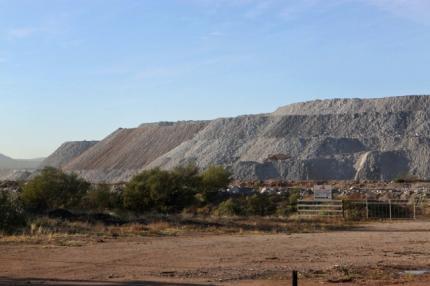Global Seaborne Coal Market Oversupply To Be 10 Mln T This Y
Bareksa • 22 Jul 2014

A view of the coal mine under development. (REUTERS/Jim Regan)
Some coal producers are already unprofitable at current pricing levels and are having to cut production rates.
Bareksa.com - The global market for seaborne thermal coal will be oversupplied by around 10 million tonnes this year, keeping prices below profitable levels for most coal producers well into 2015 or longer and forcing more mines to close.
Coal prices have halved over the past three years as a result of rising output from exporters including Australia, Indonesia, South Africa, Colombia and the United States and sluggish demand from both industrialised and emerging markets.
Thermal coal, or hard coal, is used primarily to generate power. It is traded globally and shipped by sea.
Many analysts have said oversupply is affecting coal markets, but pinning down the numbers can be difficult due to different ways of calculating demand, production rates and the quality of available data.
Traders and analysts estimate the oversupply in a range of 7 to 12 million tonnes, which is out of a volume of trade in hard coal that will reach almost 1 billion tonnes this year.
A number of traders say they expect oversupply to be 7 to 10 million tonnes in 2014, while French bank Societe Generale says the overhang could be as high as 12 million tonnes.
"I don't think anyone knows, but it (oversupply) has got to be more than 7 million tonnes," Ian Foy, head of energy management at British utility Drax, told Reuters.
OVERSUPPLY TO CONTINUE
"Each analyst has a different way of counting, and there are many gradations of coal quality, so forcing everything into one table has its limitations," said Paolo Coghe, an energy analyst at Societe Generale.
While exact numbers are hard to come by, analysts agree that surplus coal will remain a problem in 2015 and 2016.
Societe Generale sees oversupply falling to around 7 million tonnes in 2015 and 5 million in 2016 as Chinese and Indian demand strengthens and soaks up more supply.
Bank of America Merrill Lynch says the surplus will continue to plague the market until producers curb output further, probably in 2016.
Global demand growth has been slowing. The International Energy Agency has reduced its forecast for average coal demand growth to 2018 to 2.3 percent a year from 2.6 percent.
In Europe and North America, coal consumption is falling as natural gas and renewables eat into coal's share of power generation and as energy efficiency reduces the overall need to burn coal.
In Asia, demand growth is slowing. In China, slowing economic growth is adding to political pressures on businesses to use more natural gas than coal - the dirtiest fuel for electricity generation - due to choking pollution in the biggest cities.
Overall Asian demand, however, could pick up slightly next year and start eating into oversupply. Also at some point, supply will fall as loss-making coal mines shut.
Some coal producers are already unprofitable at current pricing levels and are having to cut production rates. The vital question is how cheaply others can offer their supplies before deciding to pull back.
"We have to expect at some point the low (coal) price will take out capacity. We are getting close to where Colombian prices are, which is the cheapest option at the moment," Drax's Foy said.
Most analysts say Colombia can export coal profitably at prices of around $65 a tonne.
This compares with European physical coal prices for August delivery of around $74 a tonne, and South African and Australian prices of $70 a tonne or lower.
Despite the oversupply, analysts say there are some factors that could still raise coal prices slightly this year.
In the Atlantic basin, Colombia, which is one of Europe's biggest suppliers, plans to produce over 90 million tonnes of coal this year.
But road and rail blockades caused disruptions to shipments in the first few months of the year. This month, dust slowed production, and an ongoing mechanics strike could also hurt output.
In Asian markets, Indian utilities are likely to need much more imported coal than anticipated as Coal India, the world's largest coal miner, fails to meet demand.
As a result, India's coal demand is expected to rise 6 percent to 787 million tonnes this financial year, which could lift its imports to nearly 200 million tonnes. (Source : Reuters)